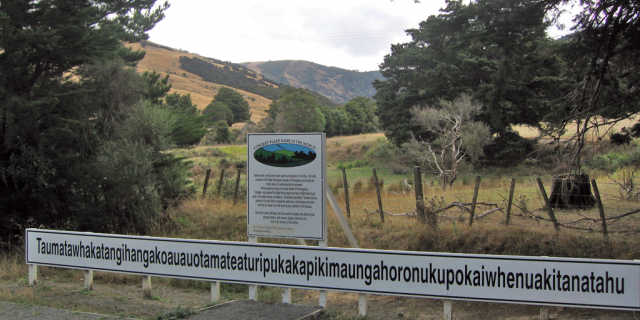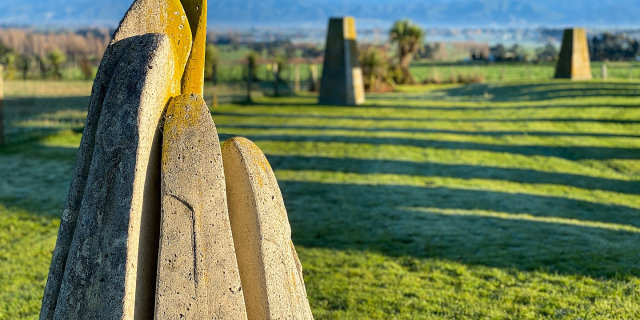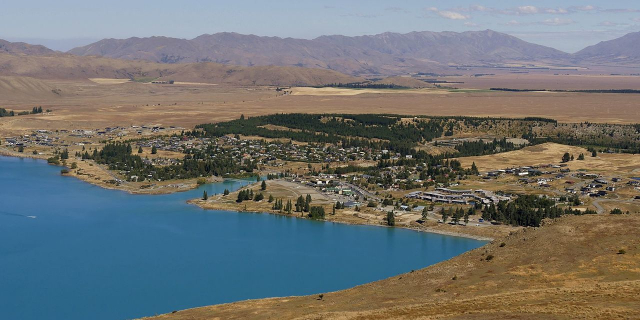The Pink and White Terraces (Māori: Te Otukapuarangi, lit. 'the Fountain of the Clouded Sky' and Te Tarata, 'the Tattooed Rock'), were natural wonders of New Zealand. They were reportedly the largest silica sinter deposits on Earth. Until recently, they were lost and thought destroyed in the 1886 eruption of Mount Tarawera, while new hydrothermal features formed to the south-west i.e. Waimangu Volcanic Rift Valley.
The Pink and White Terraces were formed by upwelling geothermal springs containing a cocktail of silica-saturated, near-neutral pH chloride water. These two world-famous springs were part of a group of hot springs and geysers, chiefly along an easterly ridge named Pinnacle Ridge (or the Steaming Ranges by Mundy). The main tourist attractions included Ngahapu, Ruakiwi, Te Tekapo, Waikanapanapa, Whatapoho, Ngawana, Koingo and Whakaehu.
The Pink and the White Terrac...Read more
The Pink and White Terraces (Māori: Te Otukapuarangi, lit. 'the Fountain of the Clouded Sky' and Te Tarata, 'the Tattooed Rock'), were natural wonders of New Zealand. They were reportedly the largest silica sinter deposits on Earth. Until recently, they were lost and thought destroyed in the 1886 eruption of Mount Tarawera, while new hydrothermal features formed to the south-west i.e. Waimangu Volcanic Rift Valley.
The Pink and White Terraces were formed by upwelling geothermal springs containing a cocktail of silica-saturated, near-neutral pH chloride water. These two world-famous springs were part of a group of hot springs and geysers, chiefly along an easterly ridge named Pinnacle Ridge (or the Steaming Ranges by Mundy). The main tourist attractions included Ngahapu, Ruakiwi, Te Tekapo, Waikanapanapa, Whatapoho, Ngawana, Koingo and Whakaehu.
The Pink and the White Terrace springs were around 1,200 metres (3,900 ft) apart. The White Terraces were at the north-east end of Lake Rotomahana and faced west to north west at the entrance to the Kaiwaka Channel. Te Tarata descended to the lake edge around 25 metres (82 ft) below. The Pink Terraces lay four fifths of the way down the lake on the western shore, facing east to south-east. The pink appearance over the mid and upper basins (similar to the colour of a rainbow trout) was due to antimony and arsenic sulfides, although the Pink Terraces also contained gold in ore-grade concentrations.
One of the first Europeans to visit Rotomahana was Ernst Dieffenbach. He briefly visited the lake and terraces while on a survey for the New Zealand Company[1] in early June 1841. The description of his visit in his book Travels in New Zealand[2] inspired an interest in the Pink and White Terraces by the outside world.
The terraces became New Zealand's most famous tourist attraction, sometimes referred to as the Eighth Wonder of the World. New Zealand was still relatively inaccessible to Europeans and passage took several months by ship. The journey from Auckland was typically by steamer to Tauranga, the bridle track to Ohinemutu on Lake Rotorua, by coach to Te Wairoa (the home of the missionary the Reverend Seymour Mills Spencer),[3] by canoe across Lake Tarawera, and then on foot or by canoe up and/or down the Kaiwaka Channel; over the hill to the swampy shores of Lake Rotomahana and the terraces,[4] access to which was controlled by Tūhourangi.[5] Artist Charles Blomfield recounted that tourists would arrive at the White Terrace about 11 a.m., view the sights there, lunch on potatoes and koura (freshwater crayfish) cooked at a boiling spring, cross over to the Pink Terraces, bathe there and then go back.[6]
Those who made the journey to the terraces were most frequently well-to-do, young male overseas tourists or officers from the British forces in New Zealand.[7] The list of notable tourists included Sir George Grey in 1849, Alfred Duke of Edinburgh in 1869, and Victorian novelist Anthony Trollope in 1874.[8]
 A view of the Pink Terrace by Charles Bloomfield, 1887
A view of the Pink Terrace by Charles Bloomfield, 1887The appearance of the terraces was recorded for posterity by a number of photographers, but as it was before colour photography was invented, their images lack the enticing colour the formations were known for. Several artists drew and painted the terraces before their loss in 1886, most notably Charles Blomfield who visited on more than one occasion. Their atmospheric views are the main record of the Eighth Wonder of the World. The colour chemistry of the Pink Terraces can be seen today at Waiotapu, where the Champagne Pool is lined with these same colloidal sulfides.[9]
Sophia Hinerangi, sometimes known as Te Paea, took over as principal guide from the older Kate Middlemass in the early 1880s. She became recognised as the principal tourist guide of the Pink and White Terraces. Hinerangi observed the disturbances to Lake Tarawera water levels in the days preceding the eruption.[10] In 1885, Alfred Warbrick began guiding, though he was not from Te Tūhourangi.[11]





























Add new comment